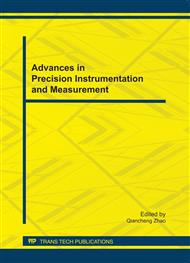p.592
p.600
p.606
p.611
p.616
p.622
p.628
p.633
p.641
Development of a Heart Rate Measurement Method Using Body Conduction Sound Sensor
Abstract:
A measurement method of heart rate is suggested, that is able to calculate a heart rate from a heartbeat sound which is measured by a body conduction sound sensor. The heart rate is obtained to calculate the autocorrelation of the sound. The effectiveness of this method is supported by comparison of values measured by a blood pressure monitor and a body conduction sound sensor. When we make a measurement system using a microcomputer, it could not measure heartbeat sounds at a high frequency because of performance of the hardware. In case of lower sampling frequency is checked and, it is shown that the correct heart rates are measured in the case of a sampling frequency is hundreds of hertz in the method.
Info:
Periodical:
Pages:
616-621
Citation:
Online since:
September 2011
Authors:
Price:
Сopyright:
© 2012 Trans Tech Publications Ltd. All Rights Reserved
Share:
Citation:


